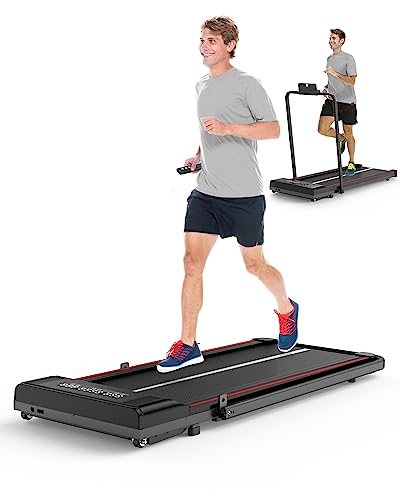treadmills-uk4835
treadmills-uk4835
What The Heck What Exactly Is Tread Mill?

Treadmills: A Comprehensive Guide to Understanding Their Functionality, Benefits, and Appropriate Selection
Introduction
Treadmills have actually become a staple in contemporary fitness routines, both in homes and health clubs worldwide. They offer a convenient and effective way to keep cardiovascular health, boost endurance, and assist in weight management. This post checks out the different types of treadmills, their benefits, functions to consider when acquiring, and some FAQs to assist users in making informed choices.
Kinds of Treadmills
When it concerns picking a treadmill, it is crucial to understand the different types readily available in the market. Here are the main classifications:
1. Handbook Treadmills
- Mechanism: These treadmills have a basic design and depend on the user’s efforts to move the belt.
- Pros: More budget-friendly, quieter operation, no electrical energy needed.
- Cons: Limited functions, might not offer the exact same variety of exercise strength.
2. Motorized Treadmills
- Mechanism: Powered by a motor that drives the belt, enabling users to walk or run at a set rate.
- Pros: Greater variety of speeds and inclines, equipped with many features such as heart rate screens and exercise programs.
- Cons: More pricey and might need more maintenance.
3. Folding Treadmills
- Mechanism: Designed for those with limited area, these treadmills can be folded for easy storage.
- Pros: Space-saving, often motorized, versatile features.
- Cons: May be less resilient than non-folding models.
4. Industrial Treadmills
- System: High-quality machines created for use in health clubs and fitness centers.
- Pros: Built to withstand heavy use, advanced features, frequently include guarantees.
- Cons: Pricey and not ideal for home usage due to size.
5. Curved Treadmills
- Mechanism: An unique design that enables users to propel the belt using their own energy.
- Pros: Offers a more natural running experience, promotes better running type.
- Cons: More expensive and can be noisier.
| Treadmill Type | Pros | Cons |
|---|---|---|
| Handbook | Inexpensive, no electricity required | Restricted functions |
| Motorized | Variety of speeds, advanced functions | Upkeep required |
| Folding | Space-saving, typically motorized | May lack resilience |
| Industrial | Constructed to last, professional-grade features | Pricey |
| Curved | Natural running experience, promotes great kind | Higher cost |
Advantages of Using Treadmills
Treadmills use many advantages that can add to one’s overall fitness and health goals. A few of these advantages consist of:
- Convenient Workouts: Treadmills permit users to exercise inside your home despite weather conditions.
- Cardiovascular Health: Regular usage can improve heart health by increasing endurance and promoting healthy circulation.
- Weight Management: Effective for burning calories, which assists in weight reduction and management.
- Adjustable Workouts: Users can manage speed, slope, and period to produce tailored exercise experiences.
- Security: Treadmills offer a predictable surface, reducing the threat of falls compared to outdoor running.
- Multifunctional: Many treadmills featured functions like heart rate screens, exercise programs, and even entertainment systems.
Choosing the Right Treadmill
When picking a treadmill, possible buyers need to consider several key factors:

Features to Consider:
- Motor Power: Typically determined in horsepower (HP), a motor strength of at least 2.5 HP is advised for serious runners.
- Belt Size: A longer and larger belt accommodates different stride lengths, supplying convenience throughout workouts.
- Slope Settings: Adjustable incline functions imitate outside hill running and can increase workout intensity.
- Weight Capacity: Ensure the treadmill can support the user’s weight for security and longevity.
- Console Features: Look for easy to use dashboards, workout programs, and Bluetooth compatibility for streaming music or other functions.
Budget Considerations
- Under ₤ 500: Entry-level manual treadmills suitable for casual walkers.
- ₤ 500 – ₤ 1,500: Mid-range motorized treadmills that offer more functions and better resilience.
- ₤ 1,500 – ₤ 3,000: High-end models with innovative innovation, larger motors, and longer warranties.
- Over ₤ 3,000: Commercial-grade treadmills perfect for frequent use in health clubs or training centers.
Often Asked Questions (FAQs)
1. How typically should I use a treadmill?
It is suggested to utilize a treadmill at least three to five times a week, integrating different strength levels for best home treadmills Uk outcomes.
2. Can I reduce weight by utilizing a treadmill?
Yes, consistent usage of a treadmill can add to weight reduction, especially when combined with a well balanced diet and strength training.
3. What is the best speed to walk on a treadmill for beginners?
A speed of 3 to 4 miles per hour is an ideal variety for beginners. It’s essential to start sluggish and slowly increase pace as convenience and stamina improve.
4. Do I need to use a treadmill if I currently run outdoors?
Utilizing a treadmill can supply fringe benefits, such as regulated environments and varied workouts (slope, periods) that are not constantly possible outdoors.
5. How do I keep my treadmill?
Regular upkeep consists of lubricating the belt, cleaning up the deck and console, and inspecting the motor for optimal efficiency.
Treadmills are essential tools for those aiming to boost their fitness levels in a regulated and convenient manner. With various types offered, understanding their functions and advantages is crucial for making an informed purchase. By thinking about personal workout needs, space availability, and spending plan restraints, individuals can find the most appropriate treadmill that fits their lifestyle. Integrating treadmill workouts into a balanced fitness regimen can cause improved health results and a pleasurable exercise experience.


